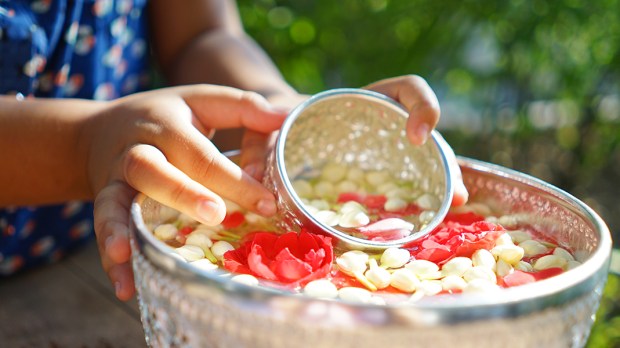As Christians, we are fortunate to have the examples of the saints, holy men and women who guide us on our journey to Heaven. It’s encouraging to know that so many different people, with their peculiarities and flaws, achieved sanctity. But unfortunately, the vast majority of holy people lived so long ago that it’s hard to know as much about their everyday lives as we would like to.
That’s one reason it’s such a gift to read memoirs, interviews, and other information about modern-day saints. How did they like to spend their time? What were they like as children? What were their favorite things to do or funny habits? Getting a deeper look into their lives through the more thorough record-keeping available in modern times helps us envision our own path to holiness.
In the stories we have available about the saints as children, one stands out as an easy, fun, and beneficial activity for our own children to imitate (certainly much better than stealing pears—looking at you, St. Augustine!). In her memoir turned spiritual classic Story of A Soul, St. Therese of Lisieux shares a cherished memory from her childhood:
On returning home I learned my lessons, and then spent the rest of the day playing in the garden near Papa. I never cared for dolls, but one of my favorite amusements was making colored mixtures with seeds and the bark of trees. If the colors were pretty, I would promptly offer them to Papa in a little cup and entice him to taste them; then my dearest Father would leave his work and smilingly pretend to drink … I should never stop if I told you of the thousand and one incidents of this kind that I can remember. How shall I make you understand the love that my Father lavished on his little Queen!
It’s such a simple activity: pretending to cook with natural materials in the family garden. Yet this game helped St. Therese develop the creativity and caring that were part of her saintly character. It became one of her happiest childhood memories.
Interestingly, there’s a new trend in recent years to encourage just this kind of pretend cooking with objects found in nature. Maybe you’ve seen these mud kitchens on Pinterest or Instagram. It’s the exact game St. Therese loved, with a modern update of providing a little kitchen or pots and pans for the children to use.
Now we know a few of the reasons this activity is so good for children. Diane Moore in HomeBeautful writes:
The benefits of outdoor play for children in their early years are innumerable. Being immersed in nature helps to reduce stress and anxiety in children and lift their mood. Improvements in motor skills, eye muscles, Vitamin D levels, problem solving and sensory development are all experienced, as well as important opportunities for risk-taking, adventure-seeking and better focus when they return indoors to live and learn.
If you’ve got a little backyard or garden, you can encourage your little ones to play like St. Therese did. It doesn’t need to be anything fancy. While a kitchen set is fun, all you need is a bowl or cup. St. Therese used a little teacup, which is now a relic you can see at the National Shrine of St. Therese in Darien, Illinois.
Sometimes the simplest toys are the best, like when kids have a blast playing with a stick or cardboard box. This “mud kitchen” outdoor cooking game is one that generations of children have loved, and it’s still a classic for a reason. We can hope that it becomes as happy a memory for our children as it was for St. Therese, helping them on their own journeys to Heaven.

Read more:
The crazy idea that might make this the best summer of your life
Read more:
5 Saints who loved the great outdoors

